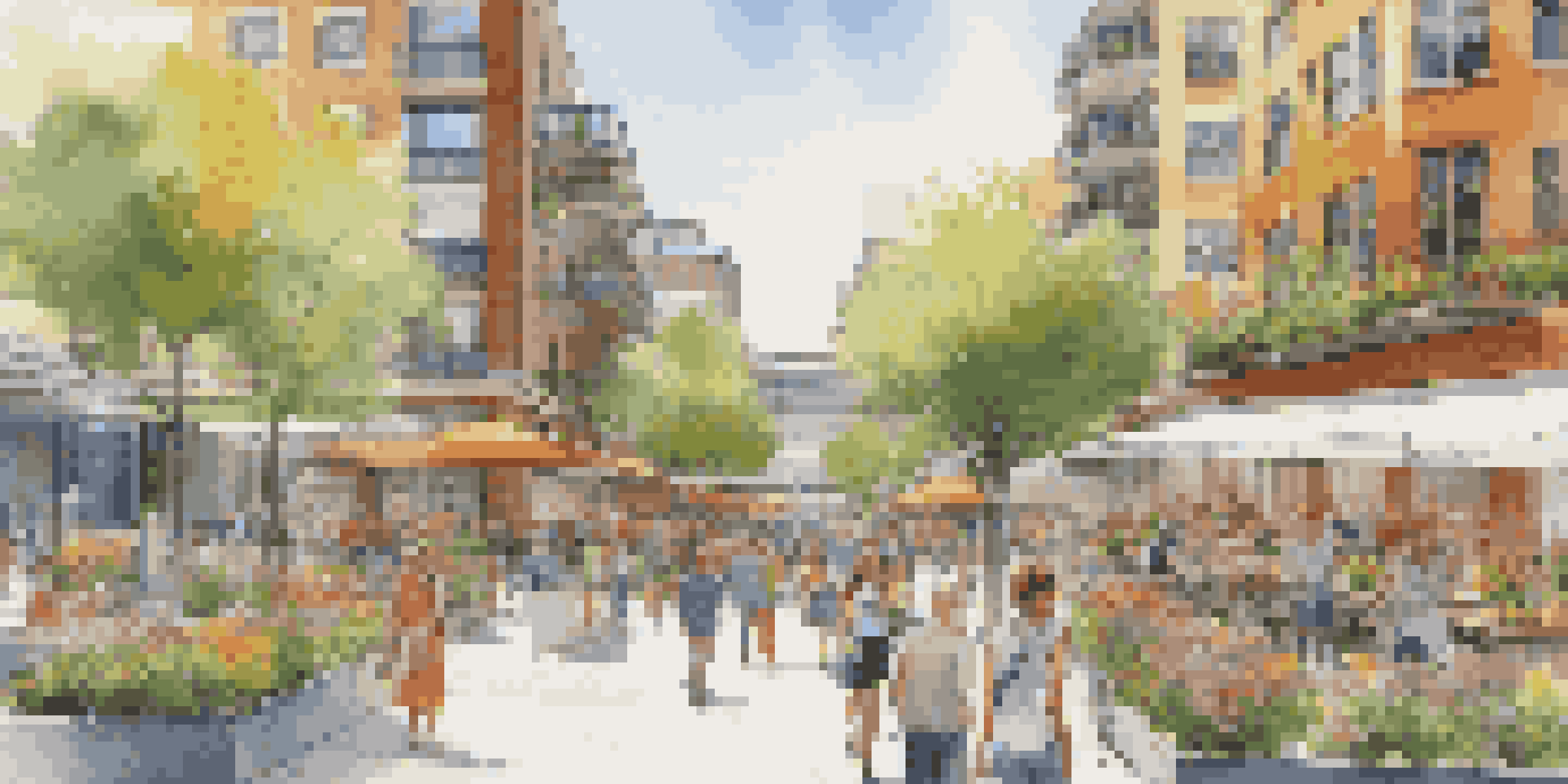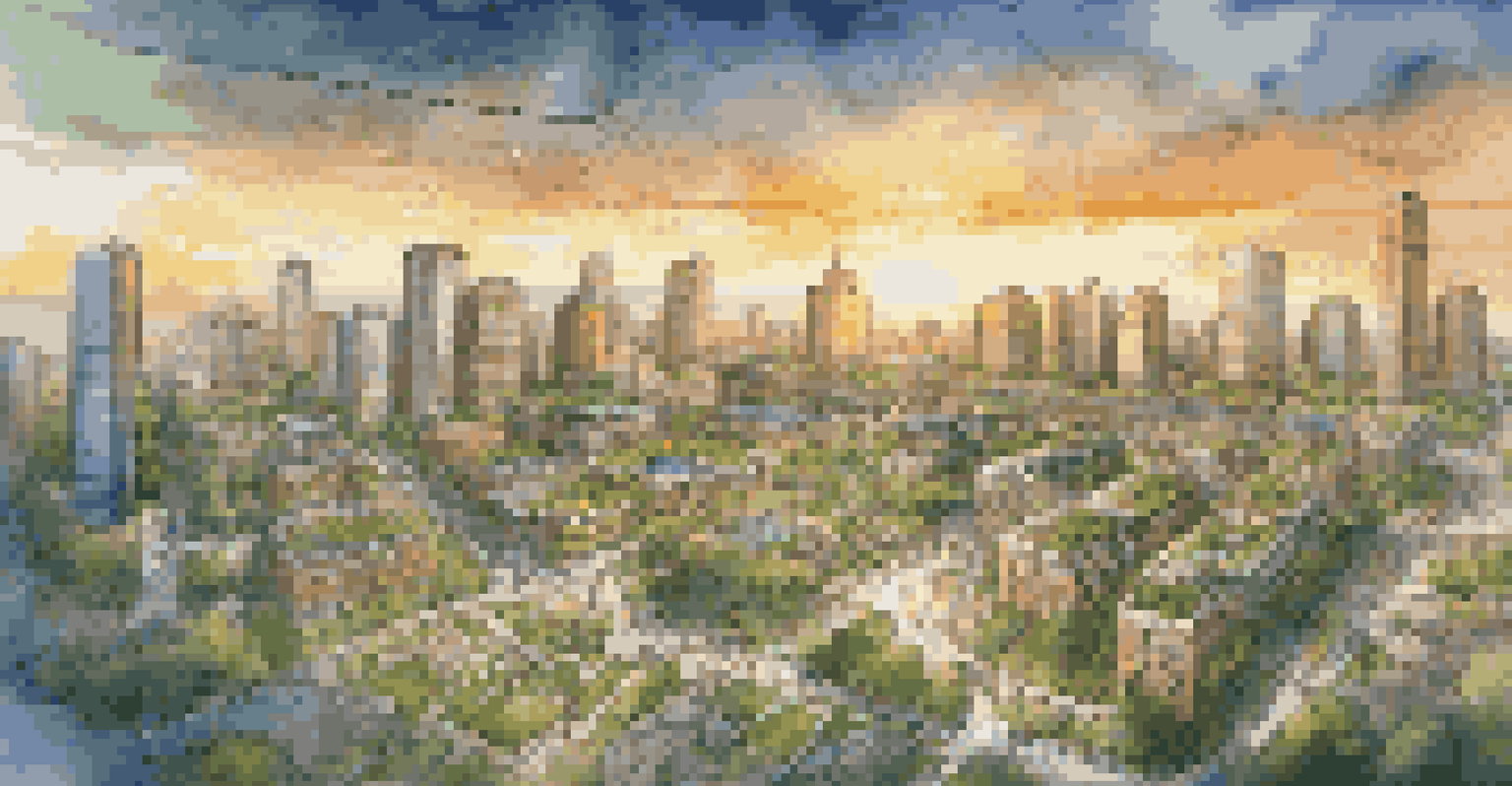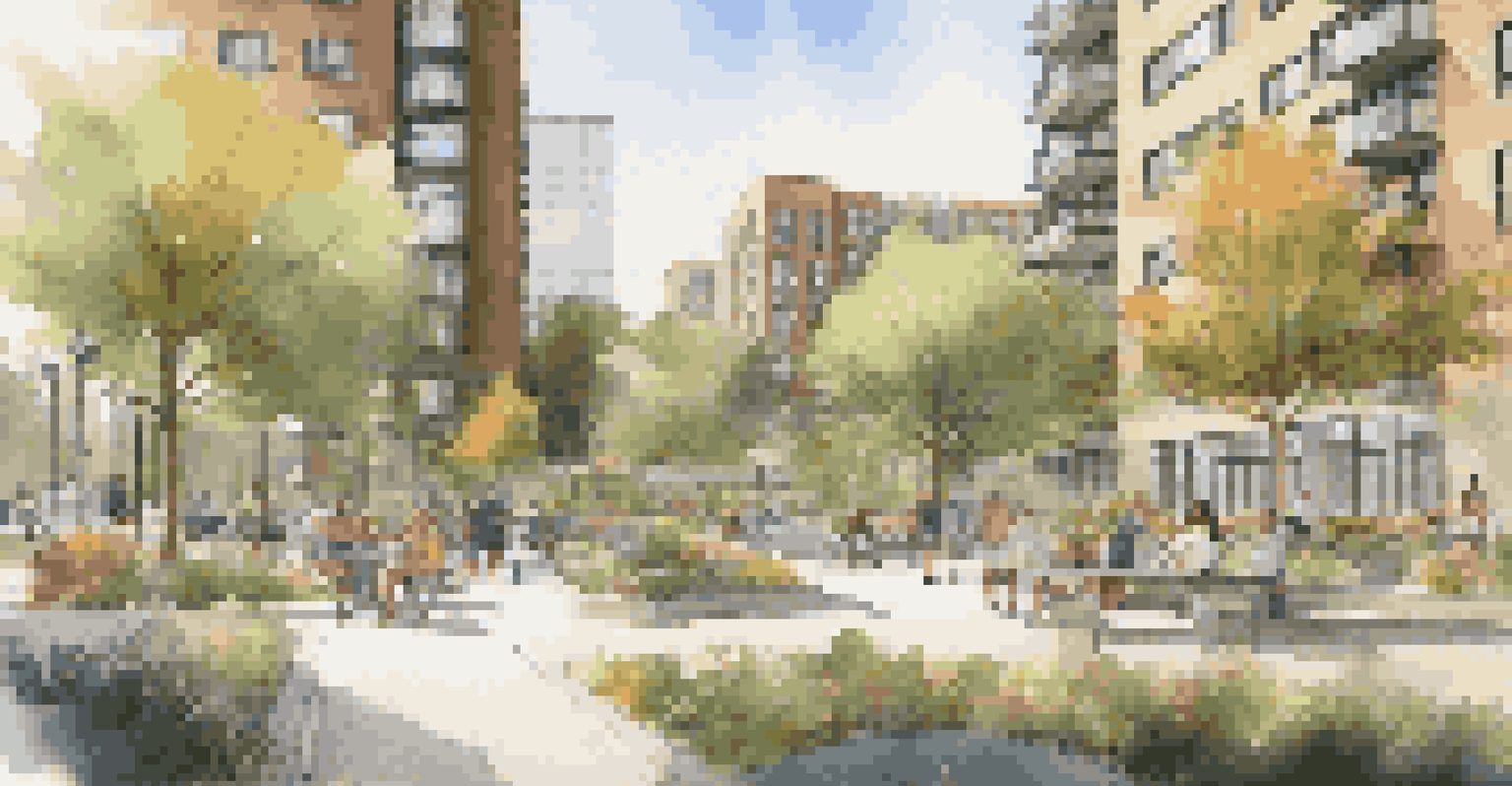Smart Cities and the Evolution of Mixed-Use Developments

Understanding Smart Cities: A Brief Overview
Smart cities leverage technology and data to improve urban living. They integrate systems for transportation, energy, and communication, creating a connected environment. Imagine a city where traffic lights adjust based on real-time traffic flow—this is just a glimpse of what smart cities can do.
The greatest challenge cities face in the 21st century is not how to grow, but how to grow sustainably.
The goal of smart cities is to enhance the quality of life for residents while promoting sustainability. With a focus on efficiency, these urban areas aim to reduce waste and energy consumption. For instance, smart waste management systems can optimize garbage collection routes, leading to cleaner neighborhoods.
As urban populations grow, the need for innovative solutions becomes more pressing. Smart cities address challenges like overcrowding and pollution by utilizing data-driven strategies. They represent a shift towards more resilient urban spaces that can adapt to the needs of their inhabitants.
The Concept of Mixed-Use Developments
Mixed-use developments combine residential, commercial, and recreational spaces within a single area. This approach encourages walkability and creates vibrant communities where people can live, work, and play. Think of a neighborhood where you can grab a coffee, go to work, and return home without needing a car.

These developments foster social interaction and reduce the reliance on vehicles, which can alleviate traffic congestion. They often feature parks, shops, and residences all within walking distance, promoting a sense of community. This integration of different spaces reflects a growing trend in urban planning.
Smart Cities Improve Urban Living
Smart cities utilize technology and data to enhance transportation, energy management, and communication for a better quality of life.
The rise of mixed-use developments aligns perfectly with the principles of smart cities. By creating compact, multifunctional neighborhoods, cities can enhance accessibility and quality of life. This synergy helps to create vibrant urban landscapes that cater to diverse lifestyles.
How Smart Technology Enhances Mixed-Use Spaces
Smart technology plays a crucial role in enhancing mixed-use developments. From integrated building management systems to smart parking solutions, these innovations improve convenience for residents and businesses alike. For example, smart apps can guide users to available parking spots, saving time and reducing frustration.
Technology is best when it brings people together.
Additionally, technology can facilitate better communication between residents and city services. A mobile app might allow residents to report issues like potholes or broken streetlights, which can be addressed promptly. This fosters a sense of community involvement and improves overall satisfaction.
Moreover, smart technologies can optimize energy use in mixed-use buildings, leading to significant cost savings. Automated systems can adjust lighting and HVAC settings based on occupancy, making these spaces more environmentally friendly and economical.
The Role of Sustainability in Smart Mixed-Use Developments
Sustainability is a cornerstone of both smart cities and mixed-use developments. By integrating green building practices, these spaces can minimize their environmental impact. For example, using solar panels and rainwater harvesting systems can significantly reduce energy and water consumption.
Moreover, incorporating green spaces within mixed-use developments improves air quality and promotes biodiversity. Parks and gardens can serve as natural habitats while offering residents outdoor recreational options. This focus on nature not only enhances aesthetics but also contributes to mental well-being.
Mixed-Use Developments Foster Community
Combining residential, commercial, and recreational spaces, mixed-use developments promote walkability and vibrant urban communities.
As cities strive for sustainability, mixed-use developments can serve as models for future urban planning. They demonstrate how to balance growth with environmental responsibility, creating livable spaces that prioritize both people and the planet.
Challenges in Implementing Smart Mixed-Use Developments
Despite the benefits, implementing smart mixed-use developments comes with challenges. High initial costs can deter investors, especially in areas where funding is limited. This can stifle innovation, as developers may hesitate to take risks on new technologies.
Additionally, there can be resistance from communities accustomed to traditional urban layouts. Change can be daunting, and some residents may fear losing their neighborhood's character. Addressing these concerns through community engagement is crucial for successful integration.
Regulatory hurdles also pose challenges, as zoning laws may not align with the mixed-use concept. Adapting these regulations to facilitate smart developments requires collaboration between city planners and developers. This process can be slow, but it’s essential for fostering the cities of the future.
Successful Examples of Smart Mixed-Use Developments
Cities around the world are already seeing the benefits of smart mixed-use developments. For instance, the Hudson Yards project in New York City combines residential, commercial, and public spaces, all enhanced by cutting-edge technology. With smart sensors and energy-efficient designs, it serves as a model for future urban projects.
Another notable example is the King’s Cross regeneration in London, which transformed a former industrial area into a vibrant mixed-use neighborhood. It incorporates innovative technology for transportation and sustainable living, showcasing how smart planning can revitalize urban spaces.
Sustainability is Key in Urban Planning
Integrating sustainable practices in smart mixed-use developments minimizes environmental impact and promotes healthier living spaces.
These successful projects demonstrate that when cities embrace smart technologies and mixed-use designs, they can create thriving, connected communities. They not only improve the quality of life for residents but also set a benchmark for future developments.
The Future of Smart Cities and Mixed-Use Developments
Looking ahead, the future of smart cities and mixed-use developments is promising. As technology continues to evolve, we can expect even more innovative solutions tailored to urban living. Think about the potential of autonomous vehicles and their impact on urban design—these advancements could redefine how we think about space and mobility.
Moreover, the growing emphasis on sustainability will drive the development of smarter, greener urban environments. Future mixed-use developments may integrate advanced energy solutions and community-focused designs, fostering healthier lifestyles. This shift reflects a broader societal commitment to a sustainable future.

Ultimately, the evolution of smart cities and mixed-use developments will continue to shape our urban landscapes. By prioritizing innovation, sustainability, and community engagement, we can create cities that truly enhance the quality of life for all.